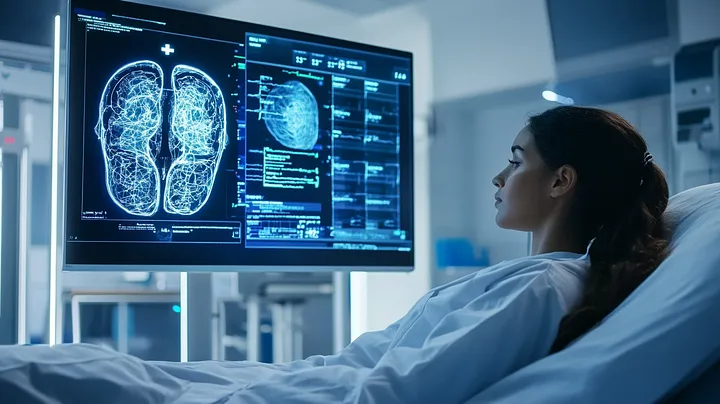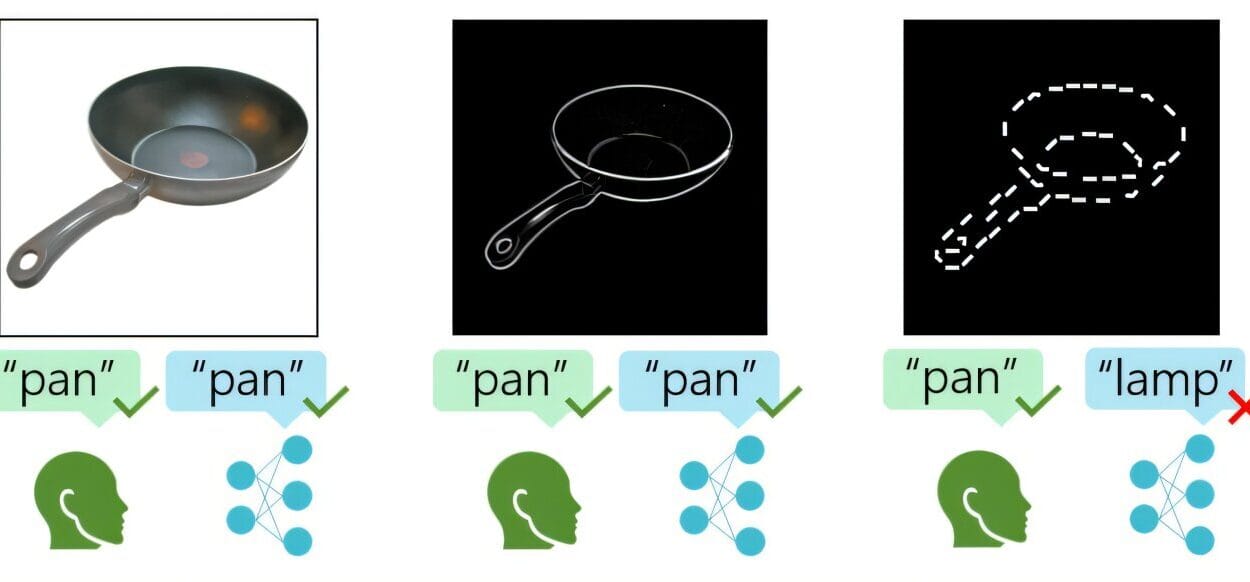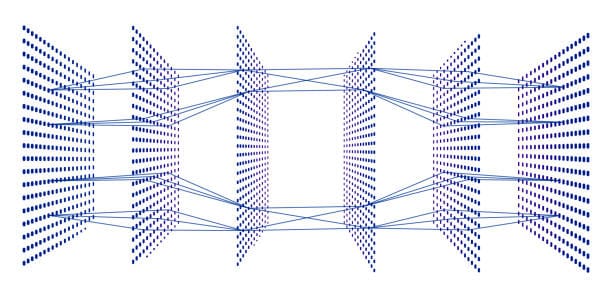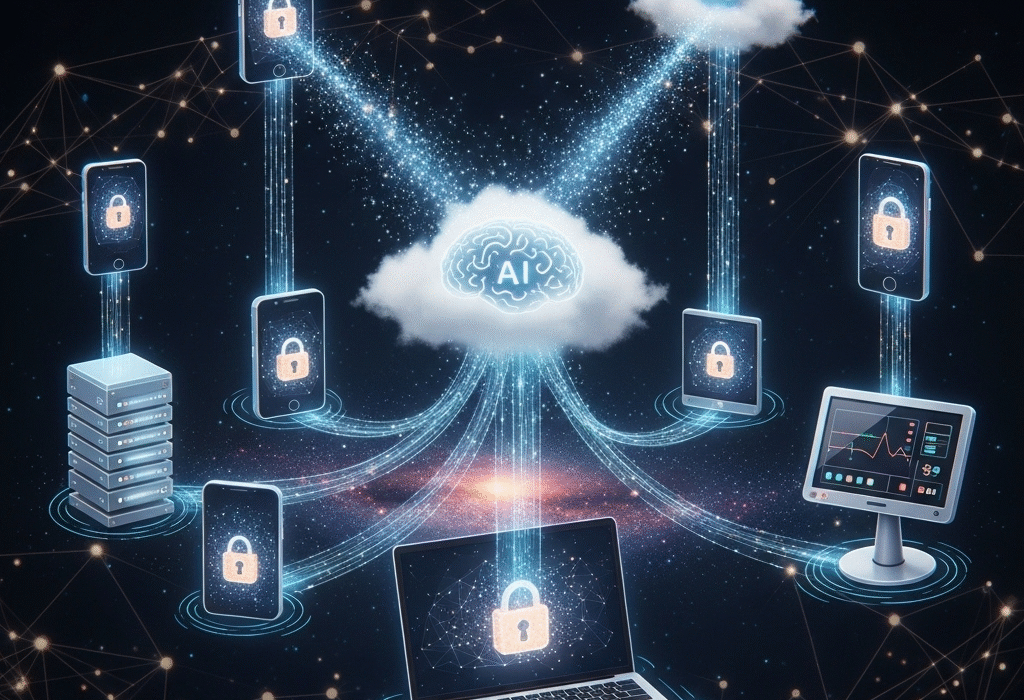Healthcare, long considered a deeply human field rooted in empathy, intuition, and experience, is undergoing a revolution. A silent partner has emerged alongside doctors and nurses, a partner capable of processing millions of data points in seconds, spotting patterns invisible to the human eye, and offering insights that were once the stuff of science fiction. This partner is Artificial Intelligence (AI), and its impact on healthcare is profound, pervasive, and just beginning to unfold.
AI’s entry into medicine represents not a replacement of the human touch, but an amplification of human capabilities. It is helping doctors diagnose diseases faster and more accurately, customize treatments to the genetic blueprints of individual patients, manage hospital workflows, predict outbreaks, assist in surgeries, and even tackle administrative burdens that drain precious time. In this sweeping journey into the AI-healthcare nexus, we will explore how artificial intelligence is reshaping diagnosis, revolutionizing treatment, enhancing patient care, and opening doors to possibilities once thought impossible.
The Power of Prediction: AI in Diagnosis
Perhaps the most celebrated use of AI in healthcare is in diagnosis, where machine learning algorithms have demonstrated capabilities that rival—and sometimes exceed—human experts. By analyzing enormous datasets, AI systems can detect patterns that are subtle, complex, and often missed by even the most experienced clinicians.
Medical imaging has been one of the earliest beneficiaries of AI. Radiology, pathology, and ophthalmology are disciplines naturally rich in visual data, and AI thrives on such inputs. Algorithms trained on millions of X-rays, CT scans, MRIs, and histological slides can now spot anomalies with astonishing speed and accuracy. Systems like Google’s DeepMind have created AI tools that can detect over fifty eye diseases from retinal scans as accurately as world-leading ophthalmologists. Another AI developed by Stanford University can identify pneumonia on chest X-rays faster than radiologists.
Beyond images, AI is making waves in analyzing electronic health records, lab results, and genetic data. Machine learning models can predict the onset of conditions like sepsis—an often fatal reaction to infection—hours earlier than traditional methods, giving clinicians precious time to intervene. AI also helps diagnose rare diseases by correlating symptoms across vast databases, making connections no single doctor could intuitively grasp.
What is striking is not just the precision of AI but its tireless consistency. While human diagnosis can be influenced by fatigue, bias, or simple oversight, AI remains methodical, offering a second pair of “eyes” that never blinks.
Personalized Medicine: Customizing Treatment Plans
The idea that medicine should be tailored to the individual rather than delivered as a one-size-fits-all solution has gained momentum in recent years. AI is the engine powering this shift toward personalized medicine.
By integrating genomics, proteomics, lifestyle data, and clinical history, AI can help craft treatment strategies uniquely suited to each patient. For cancer therapy, AI analyzes genetic mutations in tumors to recommend drugs that specifically target the molecular defects driving the cancer’s growth. This approach moves away from traditional “trial and error” prescribing, leading to more effective treatments with fewer side effects.
In chronic disease management, AI platforms can sift through patient data to predict how a condition will progress and suggest proactive interventions. Diabetics can benefit from AI algorithms that forecast blood sugar fluctuations based on diet, exercise, and historical trends, empowering them to manage their condition more effectively.
Furthermore, drug development—a traditionally slow and expensive process—is being revolutionized by AI. Machine learning models predict how molecules will interact with biological targets, drastically accelerating the identification of promising drug candidates. This transformation was evident during the COVID-19 pandemic, where AI was used to model viral proteins, propose potential therapeutics, and design vaccine candidates at unprecedented speed.
Surgical Precision: Robotics and AI in the Operating Room
Surgery has long been viewed as the ultimate test of a physician’s skill. Now, AI and robotics are augmenting surgical precision, enabling procedures that are less invasive, more accurate, and associated with quicker recovery times.
Robotic systems like the da Vinci Surgical System use AI-driven enhancements to assist surgeons during complex procedures. These machines are not autonomous; rather, they amplify the surgeon’s dexterity, providing enhanced visualization, stability, and microscale maneuverability. Tiny instruments guided by robotic arms can operate through incisions the size of a keyhole, minimizing trauma to surrounding tissues.
Beyond assisting human surgeons, AI is paving the way for fully autonomous robotic surgery. Research systems have already demonstrated the ability to perform delicate tasks such as stitching intestines with minimal supervision. By continuously learning from vast libraries of surgical videos and outcomes, these systems improve over time, offering the tantalizing future of safer, faster surgeries.
AI also plays a crucial role before and after surgery. Preoperatively, algorithms help map out surgical plans by analyzing imaging data. Postoperatively, AI monitors patients for signs of complications, offering early warnings that enable prompt interventions.
Enhancing Patient Care: Virtual Assistants and Remote Monitoring
Healthcare is not confined to hospitals and clinics. Increasingly, it extends into homes, aided by AI-driven virtual assistants and remote monitoring technologies. These tools empower patients to take a more active role in their health while keeping healthcare providers informed.
Virtual assistants like chatbots and AI-driven apps provide patients with instant answers to common medical questions, medication reminders, and even mental health support. Systems like Babylon Health offer symptom checkers that guide users toward appropriate care pathways, easing the burden on overstretched healthcare systems.
Wearable devices—smartwatches, fitness trackers, biosensors—collect real-time data on heart rate, activity levels, sleep quality, and even blood oxygen saturation. AI analyzes this continuous stream of information to detect abnormalities and flag potential health issues before they become critical. A smartwatch that notices irregular heart rhythms can prompt early detection of atrial fibrillation, potentially saving lives.
Telemedicine, supercharged by AI, allows clinicians to remotely monitor patients with chronic illnesses, adjusting treatments based on data trends rather than sporadic in-person visits. This not only improves outcomes but also democratizes access to care, especially in remote or underserved areas.
Administrative Alchemy: Reducing the Bureaucratic Burden
One of the hidden crises in healthcare is the staggering administrative load shouldered by clinicians. Documentation, billing, insurance claims, scheduling, and compliance paperwork consume precious time that could otherwise be spent with patients. Here too, AI is emerging as a savior.
Natural Language Processing (NLP) algorithms enable speech-to-text transcription of medical notes, reducing the time doctors spend typing. Systems automatically extract relevant information from patient conversations and populate electronic health records, ensuring thorough documentation without draining clinician focus.
AI tools also streamline billing and coding by parsing medical records to assign appropriate codes for insurance claims. By reducing errors and speeding up reimbursement processes, these systems improve the financial viability of healthcare practices.
In hospital operations, AI predicts patient admissions, optimizes bed allocation, and manages supply chains for pharmaceuticals and medical devices. This logistical intelligence reduces waste, cuts costs, and ensures resources are available when needed most.
By lightening the bureaucratic load, AI gives healthcare providers what they need most: time—time to listen, time to think, and time to care.
Ethical Challenges and Bias: The Double-Edged Sword
While AI offers extraordinary promise, it also presents serious challenges, particularly around ethics, bias, and accountability. Algorithms are only as good as the data they are trained on, and if that data reflects historical biases, so too will the AI’s recommendations.
Studies have shown that some AI diagnostic tools perform less accurately on patients from minority groups, potentially exacerbating existing healthcare disparities. Similarly, AI systems deployed without transparency risk becoming “black boxes,” making decisions that clinicians and patients cannot fully understand or contest.
There is also the question of responsibility. If an AI system makes an erroneous diagnosis or treatment recommendation that harms a patient, who is accountable—the developer, the clinician, or the healthcare institution?
To address these concerns, developers and regulators must prioritize fairness, explainability, and rigorous validation. Involving diverse populations in AI training datasets, implementing ethical oversight frameworks, and ensuring that clinicians remain central decision-makers are all vital steps toward responsible AI integration.
The Global Impact: AI for Health Equity
Beyond high-tech hospitals in wealthy nations, AI has immense potential to improve health outcomes in low-resource settings. Mobile AI platforms can bring diagnostic capabilities to rural clinics lacking specialized doctors. Algorithms that screen for diseases like tuberculosis, malaria, and diabetic retinopathy using basic smartphones can reach populations historically underserved by healthcare systems.
Moreover, AI-driven epidemiology models can predict disease outbreaks, enabling preemptive public health interventions. During the Ebola and Zika outbreaks, AI helped track infection patterns and forecast future hotspots, informing response strategies.
By democratizing access to expertise and enabling proactive care, AI can become a powerful tool for global health equity—if its development and deployment are pursued with intentional inclusivity.
Looking Ahead: The Future of AI in Healthcare
The future of AI in healthcare is dazzling, but it will not be free of obstacles. Trust must be earned. Regulatory pathways must be navigated. Ethical dilemmas must be addressed with wisdom and humility. Yet, the potential is undeniable.
Imagine hospitals where AI triages incoming patients, prioritizing care based on real-time assessments. Picture a world where personalized cancer vaccines are designed in weeks by AI algorithms modeling immune responses. Envision home devices that continuously monitor your health, alerting you to threats before symptoms even appear.
Further ahead, AI may integrate with genomics, synthetic biology, and nanotechnology to engineer bespoke cells that cure disease from within. Brain-machine interfaces, powered by AI, could restore movement to paralyzed individuals or memory to those with Alzheimer’s.
In this unfolding story, humanity and technology are partners. AI will not replace doctors; it will empower them. It will not diminish human empathy; it will elevate it by freeing clinicians from tedious tasks, allowing deeper focus on healing and compassion.
Conclusion: A New Horizon of Healing
Artificial Intelligence is not just a tool or a trend in healthcare; it is a transformative force that is reshaping the very nature of medicine. From diagnosis to treatment, from prevention to patient care, AI is weaving itself into the fabric of health systems around the world, promising faster, smarter, more personalized, and more equitable care.
Yet, as with all revolutions, it brings challenges alongside opportunities. As we step into this future, our greatest task will be to wield AI with wisdom, humility, and an unshakable commitment to the dignity and humanity of every patient.
In doing so, we stand at the threshold of a new horizon of healing—one where the combined genius of human beings and artificial intelligence can achieve what neither could alone: a healthier, more compassionate world.






